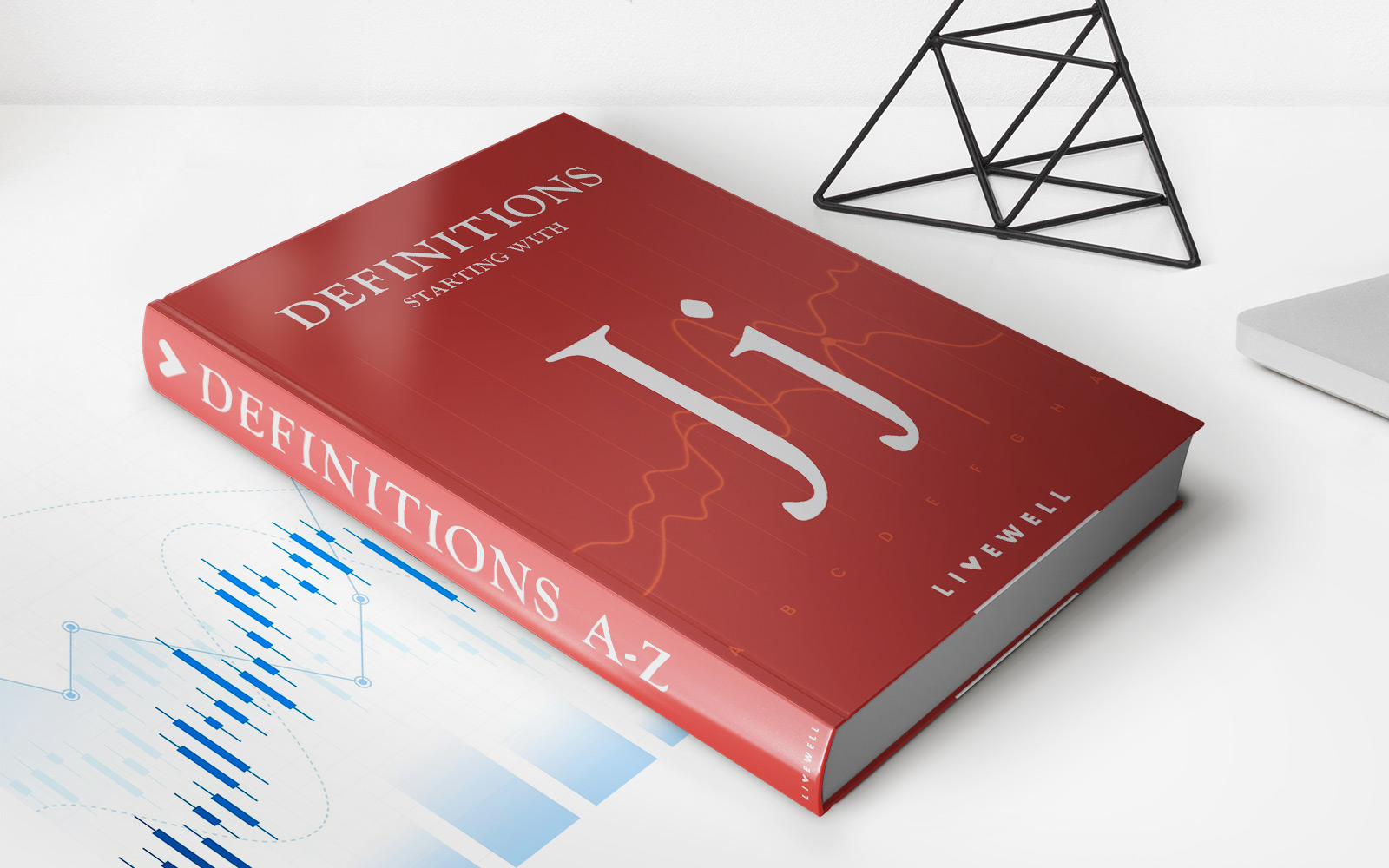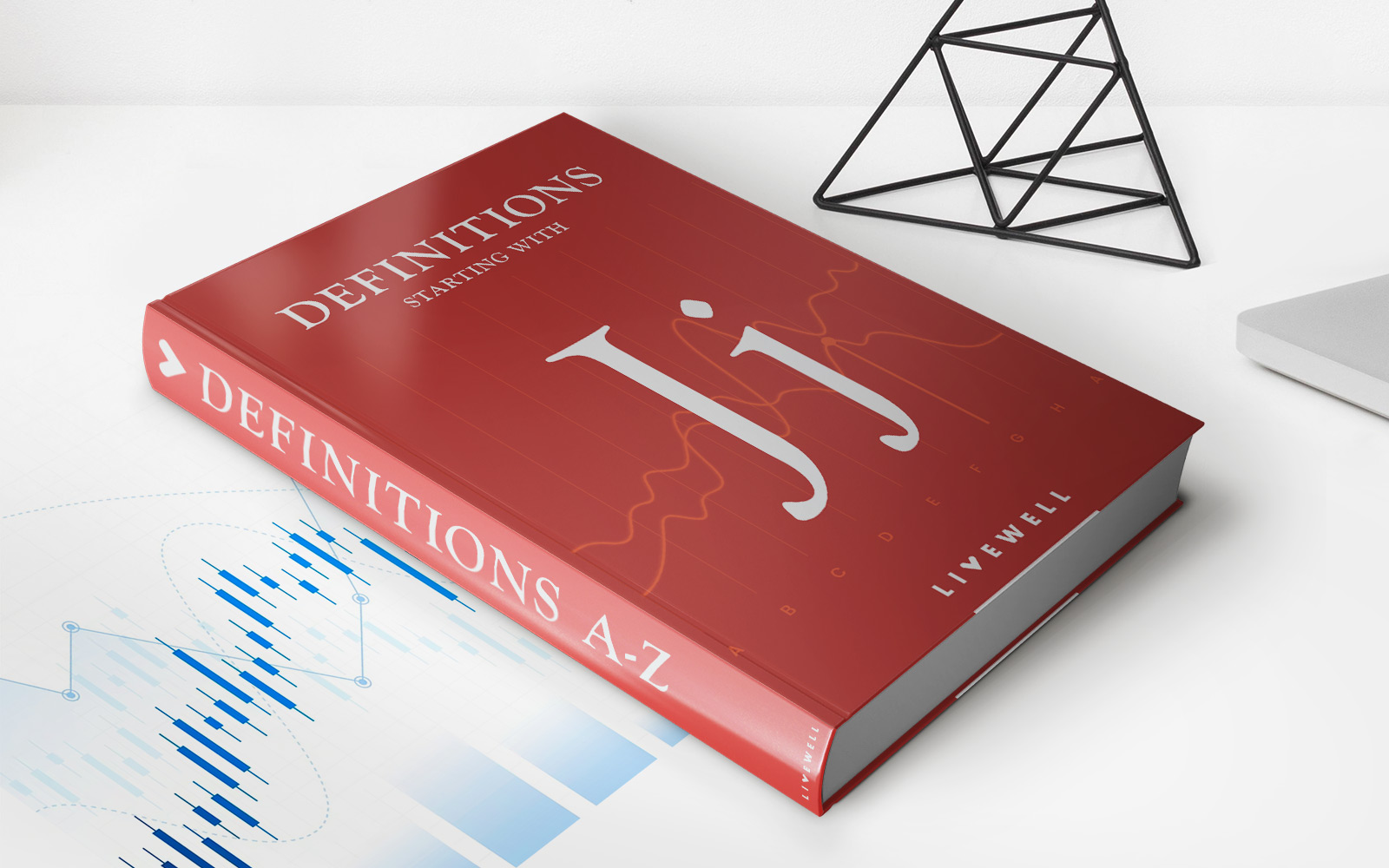

Finance
How Mutual Funds Are Taxed
Modified: December 30, 2023
Learn how mutual funds are taxed and understand the implications for your finances. Explore the key tax considerations in managing your investment portfolio.
(Many of the links in this article redirect to a specific reviewed product. Your purchase of these products through affiliate links helps to generate commission for LiveWell, at no extra cost. Learn more)
Table of Contents
Introduction
When it comes to investing in the stock market, mutual funds are a popular choice for many individuals. They offer a convenient way to diversify your investments across a wide range of stocks, bonds, and other assets, managed by professional fund managers. One important factor that investors often overlook is the tax implications associated with mutual fund investments. Understanding how mutual funds are taxed can help you make informed decisions and maximize your after-tax returns.
A mutual fund is essentially a pool of money from multiple investors that is used to invest in various securities. As an investor, you purchase shares in the mutual fund, and your investment is proportionate to your share ownership. The fund invests in a diversified portfolio of assets, such as stocks, bonds, or a combination of both, with the goal of generating returns for the investors.
When it comes to taxation, mutual funds are subject to specific rules and regulations that investors must be aware of. The taxation of mutual funds primarily revolves around two key areas: capital gains and dividends.
Capital gains are the profits that arise from the sale of securities held by the mutual fund. These can be categorized as short-term or long-term capital gains, depending on the holding period of the securities. Short-term capital gains are generated from securities held for one year or less, while long-term capital gains arise from securities held for more than one year. The tax rates for short-term gains are typically higher than those for long-term gains.
Dividends, on the other hand, are the distributions made by the mutual fund from the income it receives. Dividends may be in the form of interest income from bonds or dividends from stocks. Like capital gains, dividends can also be classified as either ordinary dividends or qualified dividends, depending on certain criteria. Qualified dividends are typically taxed at a lower rate than ordinary dividends.
Another important aspect of mutual fund taxation is the treatment of reinvested distributions. When a mutual fund distributes dividends or capital gains, you can choose to either receive the distribution in cash or reinvest it back into the fund. If you reinvest the distributions, they are still subject to taxation, even though you did not receive them in cash.
It’s also worth mentioning that some mutual funds may charge redemption fees, which are incurred when you sell or redeem your shares. These fees are different from taxes and are imposed by the mutual fund company as a way to discourage frequent trading.
It is important to note that not all mutual funds are equally tax-efficient. Some funds are structured in a way that results in higher tax liabilities for investors. To assess the tax efficiency of a mutual fund, you can look at factors such as turnover rate and the type of assets held by the fund.
Reporting mutual fund taxes can be a complex process, especially if you hold investments in multiple funds. Typically, mutual funds issue Form 1099-DIV to investors, which outlines the dividends and capital gains distributions that you need to report on your tax return. It’s important to carefully review these forms and consult a tax professional if needed.
To effectively manage mutual fund taxes, there are strategies that investors can employ. For example, tax-loss harvesting involves selling investments that have experienced losses to offset capital gains. Additionally, holding mutual funds in tax-advantaged accounts, such as Individual Retirement Accounts (IRAs) or 401(k)s, can help defer or potentially eliminate taxes on investment gains.
Understanding the tax implications of mutual funds is crucial for any investor. By familiarizing yourself with the rules and regulations surrounding mutual fund taxation, you can make informed investment decisions and optimize your after-tax returns.
Understanding Mutual Funds
Mutual funds are investment vehicles that pool money from multiple investors to invest in a diversified portfolio of assets. They are professionally managed by fund managers who make investment decisions on behalf of the investors. Mutual funds provide individuals with access to a wide range of securities, including stocks, bonds, and other financial instruments.
Investing in mutual funds offers several benefits. First, they provide instant diversification. By investing in a mutual fund, you gain exposure to a diverse range of securities, which helps to spread risk. This diversification can help mitigate the impact of any single investment’s poor performance on your overall portfolio.
Second, mutual funds offer professional management. The funds are managed by experienced professionals who conduct extensive research and analysis to make informed investment decisions. This allows investors to leverage the knowledge and expertise of fund managers, even if they don’t have the time or expertise to manage their own investments.
Third, mutual funds are highly liquid investments. You can buy or sell mutual fund shares on any business day at the current net asset value (NAV), which is the price of one share in the mutual fund. This provides investors with flexibility and the ability to access their investments when needed.
There are different types of mutual funds to suit varying investment goals and risk tolerances. Equity funds, also known as stock funds, primarily invest in stocks of companies with the aim of generating long-term capital appreciation. Bond funds, on the other hand, invest in fixed-income securities like government or corporate bonds, providing regular income through interest payments.
There are also balanced funds, which allocate investments across both stocks and bonds to provide a balanced approach in terms of risk and return. Furthermore, there are specialty funds that focus on specific sectors, such as technology or healthcare, and index funds that aim to replicate the performance of a specific market index, such as the S&P 500.
Investors can choose between actively managed mutual funds and passively managed funds. Actively managed funds have fund managers who actively buy and sell securities to generate returns. They rely on their expertise and market analysis to outperform the market. Passively managed funds, on the other hand, aim to replicate the performance of a specific index and have lower expense ratios compared to actively managed funds.
When investing in mutual funds, it is important to consider factors such as the fund’s investment objective, past performance, expense ratios, and any associated fees. It is also important to align the fund’s investment strategy with your own financial goals and risk tolerance.
Overall, mutual funds offer individuals the opportunity to invest in a diversified portfolio managed by professionals. They provide instant diversification, professional management, and liquidity. Understanding the different types of mutual funds and their investment strategies can help investors make informed decisions and achieve their financial goals.
Taxation of Mutual Funds
When it comes to investing in mutual funds, understanding the taxation aspects is crucial. Mutual funds are subject to specific tax rules that can impact your investment returns. The two main areas of tax consideration for mutual funds are capital gains distributions and dividend distributions.
Capital gains distributions occur when a mutual fund sells securities from its portfolio at a profit. These distributions are taxable events and can be categorized as either short-term or long-term capital gains, depending on the holding period of the securities. Short-term capital gains, generated from securities held for one year or less, are taxed at ordinary income tax rates. Long-term capital gains, on the other hand, are taxed at lower rates, typically ranging from 0% to 20% depending on your income level.
Dividend distributions from mutual funds can be in the form of interest income from bonds or dividends from stocks. Like capital gains, dividends can be classified as either ordinary or qualified dividends. Qualified dividends are subject to lower tax rates, which align with long-term capital gains rates. The tax rates for qualified dividends range from 0% to 20%. On the other hand, ordinary dividends are taxed at ordinary income tax rates, which can be higher.
It’s important to note that even if you reinvest your distributions back into the mutual fund rather than receiving them in cash, you are still liable for taxes on those distributions. Reinvested distributions are considered taxable income in the year they are distributed, and you should report them accordingly on your tax return. By reinvesting distributions, you can benefit from compounding, but it’s important to factor in the tax consequences.
Another consideration is the potential for redemption taxes. Some mutual funds impose redemption fees as a way to discourage frequent trading and protect long-term investors. These fees are not taxes, but rather fees imposed by the mutual fund company itself. It’s important to familiarize yourself with the redemption fee structure of the mutual fund before investing.
It’s worth noting that the tax efficiency of mutual funds can vary. Some mutual funds are structured in a way that minimizes taxes for investors, while others may be less tax-efficient. Factors that affect the tax efficiency of a mutual fund include its turnover rate, which refers to how frequently the fund buys and sells securities, and the type of assets held by the fund. For example, index funds, which aim to replicate the performance of a specific market index, tend to have lower turnover rates and can be more tax-efficient compared to actively managed funds.
When it comes to reporting mutual fund taxes, the fund will provide investors with a Form 1099-DIV, which outlines the dividends and capital gains distributions received during the year. It is important to review this form and accurately report the information on your tax return to ensure compliance with tax laws.
Managing mutual fund taxes effectively can be achieved through strategies such as tax-loss harvesting and holding mutual funds in tax-advantaged accounts. Tax-loss harvesting involves selling investments that have experienced losses to offset capital gains and potentially reduce your tax liability. Holding mutual funds in tax-advantaged accounts, such as Individual Retirement Accounts (IRAs) or 401(k)s, can help defer or potentially eliminate taxes on investment gains until you withdraw the funds in retirement.
It’s important to consult with a tax professional or financial advisor to understand the tax implications of investing in mutual funds and to develop a tax-efficient investment strategy that aligns with your financial goals.
Capital Gains Distributions
Capital gains distributions are an important aspect of mutual fund taxation. When a mutual fund sells securities from its portfolio at a profit, the resulting gains are distributed to the fund’s shareholders. These distributions are subject to tax and can have implications for investors.
The capital gains distributions made by mutual funds can be classified as either short-term or long-term capital gains, depending on the holding period of the securities sold. Short-term capital gains are generated from securities held by the mutual fund for one year or less, while long-term capital gains arise from securities held for more than one year.
Short-term capital gains are taxed at ordinary income tax rates. This means that the gains are taxed at the same rates as your regular income. The tax rates for short-term gains can range from 10% to 37%, depending on your income level and tax bracket. It’s important to note that the tax rates for short-term gains are typically higher than those for long-term gains.
Long-term capital gains, on the other hand, enjoy more favorable tax rates. The tax rates for long-term gains can range from 0% to 20%. The specific rate you pay depends on your income level and tax bracket. Generally, taxpayers in lower income brackets pay a 0% rate for long-term capital gains, while taxpayers in higher income brackets pay a 15% or 20% rate.
It’s worth mentioning that the holding period of the mutual fund shares does not impact the tax treatment of capital gains distributions. Whether you have held shares in the fund for a long time or just recently purchased them, you will still be subject to the tax rates applicable to the gains distributed by the fund.
Additionally, it’s important to keep in mind that capital gains distributions from mutual funds are taxable events, even if you choose to reinvest the distributions back into the fund. This is an important distinction from capital gains realized from selling individual stocks or other investments, where you have the choice to defer taxes by reinvesting the gains.
Furthermore, it’s important to be aware of the potential tax consequences if you buy mutual fund shares shortly before the fund distributes capital gains. This is because you may receive a distribution of gains on shares you recently purchased, which could result in a tax liability for gains you did not actually benefit from at the time of purchase.
When it comes to reporting capital gains distributions on your tax return, mutual funds will provide you with a Form 1099-DIV. This form outlines the capital gains distributions you received during the year and is used to report the information accurately on your tax return.
Understanding the tax implications of capital gains distributions is essential for mutual fund investors. By noting the holding periods, tax rates, and reporting requirements, you can make informed decisions and plan your tax strategies accordingly.
Dividend Distributions
Dividend distributions are an important component of mutual fund taxation. Mutual funds receive income from the securities they hold, and a portion of that income is distributed to shareholders in the form of dividends. Understanding the tax treatment of these dividend distributions is crucial for investors.
Dividends from mutual funds can be categorized into two main types: ordinary dividends and qualified dividends. Ordinary dividends are typically taxed at ordinary income tax rates, which can be higher than the rates for qualified dividends. On the other hand, qualified dividends are generally subject to lower tax rates that align with long-term capital gains rates.
To qualify for the lower tax rates, the dividends must meet certain criteria set by the Internal Revenue Service (IRS). One of the requirements is that the mutual fund must have held the underlying securities for a specified holding period. In most cases, the holding period is at least 60 days during the 121-day period that begins 60 days before the ex-dividend date.
Qualified dividends are taxed at rates ranging from 0% to 20%, depending on your income level and tax bracket. Taxpayers in lower income brackets may owe no taxes on qualified dividends, while those in higher income brackets may pay the maximum rate of 20%. The specific tax rates applicable to qualified dividends are generally more favorable than the tax rates for ordinary dividends.
It’s important to note that the mutual fund company will provide you with a Form 1099-DIV, which outlines the dividend distributions you received during the tax year. This form assists you in accurately reporting your dividend income on your tax return.
If you reinvest your dividend distributions back into the mutual fund, rather than receiving them in cash, you are still liable for taxes on those distributions. Even though you did not physically receive the dividends, they are still considered taxable income. As a result, it’s crucial to factor in the tax consequences of reinvested dividends when assessing the overall tax impact of your mutual fund investments.
Dividend distributions from mutual funds can be a significant source of income for investors, particularly for those seeking regular cash flow. However, it’s essential to accurately report and pay taxes on these distributions to comply with tax laws and avoid potential penalties or audits.
By understanding the distinction between ordinary dividends and qualified dividends, as well as the associated tax rates, you can make informed decisions when selecting mutual funds and planning your tax strategies. Consulting with a tax professional or financial advisor can provide personalized guidance on optimizing your dividend taxation strategy based on your specific circumstances and financial goals.
Tax Treatment of Reinvested Distributions
When investing in mutual funds, investors have the option to receive distributions, such as dividends or capital gains, either in cash or reinvest them back into the fund. It’s important to understand the tax implications of reinvested distributions, as even though you don’t receive the distributions in cash, they are still subject to taxation.
When you choose to reinvest distributions, such as dividends or capital gains, they are still considered taxable income. The reinvested amount is treated as if you received it in cash and then immediately used that money to purchase additional shares of the mutual fund.
The reinvested distributions are included in your tax return for the year in which they were distributed. This means that you are responsible for reporting the distributions on your tax return and paying any applicable taxes associated with them, regardless of whether you actually received the cash or reinvested the distributions.
For example, let’s say you invest in a mutual fund that pays out $500 in dividends. If you choose to reinvest the $500, you will still need to report the $500 as taxable income on your tax return. This ensures that the tax authorities are aware of the amount of income generated by the mutual fund and can appropriately assess the tax liability on that income.
It’s important to note that the mutual fund company will provide you with a Form 1099-DIV, which outlines the distributions you received during the tax year. This form will specify the total amount of distributions, regardless of whether they were received in cash or reinvested. It should be used as a reference when reporting the income on your tax return.
Reinvested distributions can create a scenario known as “phantom income.” Phantom income refers to the taxable income generated from reinvested distributions, even though you haven’t received the cash in hand. This can potentially result in a tax liability without an immediate cash flow to cover the tax obligation.
To manage the tax impact of reinvested distributions, it’s important to set aside funds to cover the tax liability associated with these distributions. You can consider adjusting your tax withholding or making estimated tax payments to ensure you have sufficient funds to pay the taxes owed.
Reinvesting distributions can have benefits, such as the potential for compounding and growth over time. However, it’s vital to be aware of the tax consequences and plan accordingly to mitigate any potential cash flow challenges that may arise.
Consulting with a tax professional or financial advisor can provide personalized guidance on managing the tax treatment of reinvested distributions based on your individual circumstances and financial goals.
Redemption Taxes
In addition to the taxes on dividends and capital gains distributions, investors in mutual funds may also encounter redemption taxes. Unlike taxes imposed by the government, redemption taxes are fees imposed by the mutual fund company itself when investors sell or redeem their shares.
The purpose of redemption taxes is to discourage frequent buying and selling of mutual fund shares, which can disrupt the fund’s investment strategy and potentially hurt long-term investors. By imposing redemption fees, mutual fund companies aim to incentivize investors to maintain a longer-term investment horizon and reduce the impact of short-term trading on the fund’s performance.
Redemption fees are typically calculated as a percentage of the value of the shares being redeemed and are deducted from the proceeds of the redemption. The specific redemption fee structure varies by mutual fund, and some funds may not impose redemption fees at all.
The fees can range from a fraction of a percent to several percentage points, depending on the mutual fund’s policies. It’s important for investors to review the fund’s prospectus or other documentation to understand the specific redemption fee structure before investing.
It’s worth noting that redemption fees are distinct from taxes imposed by the government. While redemption fees are used by the mutual fund company to discourage frequent trading, taxes, such as those on capital gains or dividends, are imposed by the government to collect revenue based on investment gains.
Investors should be aware that redemption fees may be enforced for a specific period of time after purchasing the mutual fund shares, such as 30, 60, or 90 days. This is known as a “holding period” or “short-term trading period.” If you sell your shares within that period, you may be subject to the redemption fee. However, after the holding period expires, you can typically sell your shares without incurring the redemption fee.
It’s important to note that redemption fees are not tax-deductible. They are considered a cost associated with selling or redeeming shares and are separate from any taxes owed on investment gains.
To avoid unexpected redemption fees, it’s crucial to consider your investment time horizon and evaluate whether frequent trading aligns with your investment strategy. If you anticipate needing liquidity or have a short-term investment horizon, it may be beneficial to explore other investment options that do not impose redemption fees.
Prior to making any investment decisions, it’s advisable to carefully review the mutual fund’s prospectus and consult with a financial advisor to ensure a clear understanding of the fund’s redemption fee structure and its potential impact on your investment strategy.
Tax Efficiency of Mutual Funds
When investing in mutual funds, it’s important to consider the tax efficiency of the funds. Tax efficiency refers to how well a mutual fund manages its tax liabilities and minimizes the impact of taxes on investor returns. Some mutual funds are more tax-efficient than others, and understanding this aspect can help investors optimize their after-tax returns.
One of the key factors that affect the tax efficiency of a mutual fund is its turnover rate. Turnover rate refers to the frequency with which the fund buys and sells securities within its portfolio. When a mutual fund sells a security, it may trigger a taxable event for investors, such as capital gains distributions.
A high turnover rate means that the fund has a higher degree of buying and selling activity, potentially leading to more frequent taxable events. On the other hand, a low turnover rate indicates that the fund holds securities for a more extended period of time, resulting in fewer taxable events.
Funds with low turnover rates tend to be more tax-efficient because they generate fewer capital gains distributions. This can be beneficial for investors, as it reduces the tax burden and allows for the potential compounding of investment returns over time.
Passively managed index funds tend to have lower turnover rates compared to actively managed funds. This is because index funds aim to replicate the performance of a specific market index and typically have a “buy and hold” strategy. As a result, they have lower buying and selling activity, which translates to reduced tax liabilities for investors.
Additionally, the type of assets held by a mutual fund can influence its tax efficiency. Certain assets, such as tax-efficient stocks or tax-exempt municipal bonds, have built-in tax advantages. Investing in funds that hold these types of assets can help minimize taxes and improve overall tax efficiency.
Another factor to consider is the timing of investments. Mutual funds make annual capital gains distributions near the end of the calendar year. By being mindful of the timing of your investment, you can potentially avoid receiving capital gains distributions soon after purchasing shares, thus reducing your tax liability in the short term.
It’s important to review a mutual fund’s prospectus or consult with a financial advisor to gain insights into the fund’s specific tax-efficient strategies or other tax mitigation measures it employs. Some funds may utilize tax-loss harvesting, which involves selling securities that have experienced losses to offset capital gains and reduce taxes owed.
Lastly, holding mutual funds in tax-advantaged accounts, such as Individual Retirement Accounts (IRAs) or 401(k)s, can help improve tax efficiency. Investments in these accounts allow for potential tax deferral on investment gains or potential tax-free growth, depending on the type of account. By strategically allocating investments based on tax advantages, investors can optimize their tax efficiency and minimize tax liabilities.
Understanding the tax efficiency of mutual funds is crucial for investors seeking to enhance after-tax returns. By considering factors such as turnover rate, asset types, timing of investments, and utilizing tax-advantaged accounts, investors can make informed decisions that align with their investment objectives and optimize tax outcomes.
Reporting Mutual Fund Taxes
Reporting mutual fund taxes is an important aspect of managing your financial obligations as an investor. Mutual funds are required to provide investors with annual tax information in the form of a tax document, typically a Form 1099-DIV. This form outlines the dividends and capital gains distributions you have received from the mutual fund during the tax year.
When you receive the Form 1099-DIV, it’s crucial to review it carefully and ensure that the information is accurate. The form will include details such as the total amount of dividends and capital gains distributions, as well as any foreign taxes paid or tax-exempt dividends received.
Once you have the Form 1099-DIV, you will use this information to report your mutual fund taxes on your tax return. The specific form you use will depend on the type of account in which you hold the mutual fund and your overall tax filing status. For example, if you hold the mutual fund in a regular taxable brokerage account, you will likely use Schedule D to report capital gains and losses, and Form 1040 or Form 1040A to report dividend income.
When reporting mutual fund taxes, it’s important to accurately report the income and pay the appropriate taxes owed. Failure to report the income from your mutual fund investments can result in penalties and potential audits by tax authorities.
Keep in mind that the tax treatment of dividends and capital gains distributions may vary depending on whether the distributions are classified as ordinary dividends or qualified dividends. It’s important to differentiate between these types and apply the appropriate tax rates accordingly.
If you have reinvested your distributions back into the mutual fund, you still need to report the reinvested amount as taxable income, even though you didn’t receive it in cash. This ensures that the tax authorities are aware of the income generated by the fund and can assess the appropriate tax liability.
It’s advisable to keep accurate records of your mutual fund transactions, including purchases, sales, and reinvestments. These records will help validate the accuracy of the tax reporting information provided by the mutual fund company and serve as documentation in case of any discrepancies or potential audits.
Seeking the guidance of a tax professional or utilizing tax software to prepare your tax return can be beneficial in accurately reporting your mutual fund taxes. They can provide personalized advice based on your specific tax situation and ensure compliance with tax laws.
By diligently reviewing and accurately reporting your mutual fund taxes, you can fulfill your financial obligations as an investor and maintain compliance with tax regulations. This allows for a clear and transparent financial record and helps you avoid potential penalties or audits related to improper reporting.
Strategies for Managing Mutual Fund Taxes
Managing mutual fund taxes effectively can help minimize your tax liability and optimize your after-tax returns. Here are some strategies to consider when it comes to managing the tax impact of your mutual fund investments:
- Tax-Loss Harvesting: Tax-loss harvesting involves selling investments that have experienced losses to offset capital gains and potentially reduce your tax liability. By strategically selling underperforming investments, you can generate capital losses that can be used to offset capital gains distributions from your mutual funds or other taxable investments. It’s important to follow IRS rules and regulations when implementing tax-loss harvesting strategies.
- Hold Mutual Funds in Tax-Advantaged Accounts: Consider holding your mutual funds in tax-advantaged accounts, such as Individual Retirement Accounts (IRAs) or 401(k)s. Investments held in these accounts can potentially grow tax-deferred or tax-free, depending on the account type. By utilizing tax-advantaged accounts, you can defer or potentially eliminate taxes on investment gains until you withdraw the funds in retirement, providing additional tax efficiency.
- Consider Tax-Efficient Funds: Look for mutual funds that are structured to be tax-efficient. Funds with low turnover rates and passively managed index funds tend to generate fewer taxable events and can be more tax-efficient. By minimizing capital gains distributions, these funds can help reduce your tax liability and improve after-tax returns. Review a fund’s prospectus or consult with a financial advisor to understand the tax efficiency of a particular fund before investing.
- Take Advantage of Tax-Managed Funds: Some mutual funds actively employ tax-management strategies to minimize tax liabilities. Tax-managed funds aim to reduce taxable events, such as capital gains distributions, while still achieving their investment objectives. These funds strategically buy and sell securities to minimize taxes for investors. If tax efficiency is a priority, consider investing in tax-managed funds.
- Be Mindful of Timing: Consider the timing of your mutual fund investments. Mutual funds typically distribute capital gains toward the end of the calendar year. If you’re considering investing in a fund, it may be beneficial to time your investment to avoid receiving a capital gains distribution shortly after purchasing shares. By doing so, you can minimize your tax liability in the short term.
- Consult a Tax Professional or Financial Advisor: Seeking guidance from a tax professional or financial advisor can provide personalized advice based on your specific tax situation and financial goals. They can help you navigate the complexities of managing mutual fund taxes, ensure compliance with tax laws, and implement strategies that align with your investment objectives.
It’s important to note that tax strategies should be implemented with careful consideration of your individual circumstances and goals. What may be suitable for one investor may not be for another. Always consult with a tax professional or financial advisor to assess the appropriateness and impact of any tax management strategies based on your particular situation.
By implementing these strategies, you can effectively manage mutual fund taxes, reduce your tax liability, and optimize your after-tax returns, ultimately helping you achieve your long-term financial objectives.
Conclusion
Tax considerations play a crucial role in managing mutual fund investments. Understanding the taxation of mutual funds can help investors make informed decisions, maximize after-tax returns, and avoid potential pitfalls. By grasping key concepts such as capital gains distributions, dividend distributions, the tax treatment of reinvested distributions, and redemption taxes, investors can navigate the tax landscape confidently.
Investors should evaluate the tax efficiency of mutual funds by considering factors such as turnover rate, asset types held within the fund, and the potential benefits of holding funds in tax-advantaged accounts. Additionally, employing strategies like tax-loss harvesting and investing in tax-efficient funds can further enhance tax management.
Accurate reporting of mutual fund taxes is imperative. Investors should carefully review the tax documents received from funds, such as the Form 1099-DIV, and ensure the accurate reporting of dividend income and capital gains on their tax returns. Seeking professional advice and utilizing tax software can help streamline the process and ensure compliance with tax regulations.
In conclusion, managing mutual fund taxes involves careful consideration of various factors, including tax-efficient fund selection, timing of investments, and the implementation of tax strategies. By executing these strategies effectively, investors can minimize their tax liability, optimize after-tax returns, and ultimately achieve their long-term financial goals.














